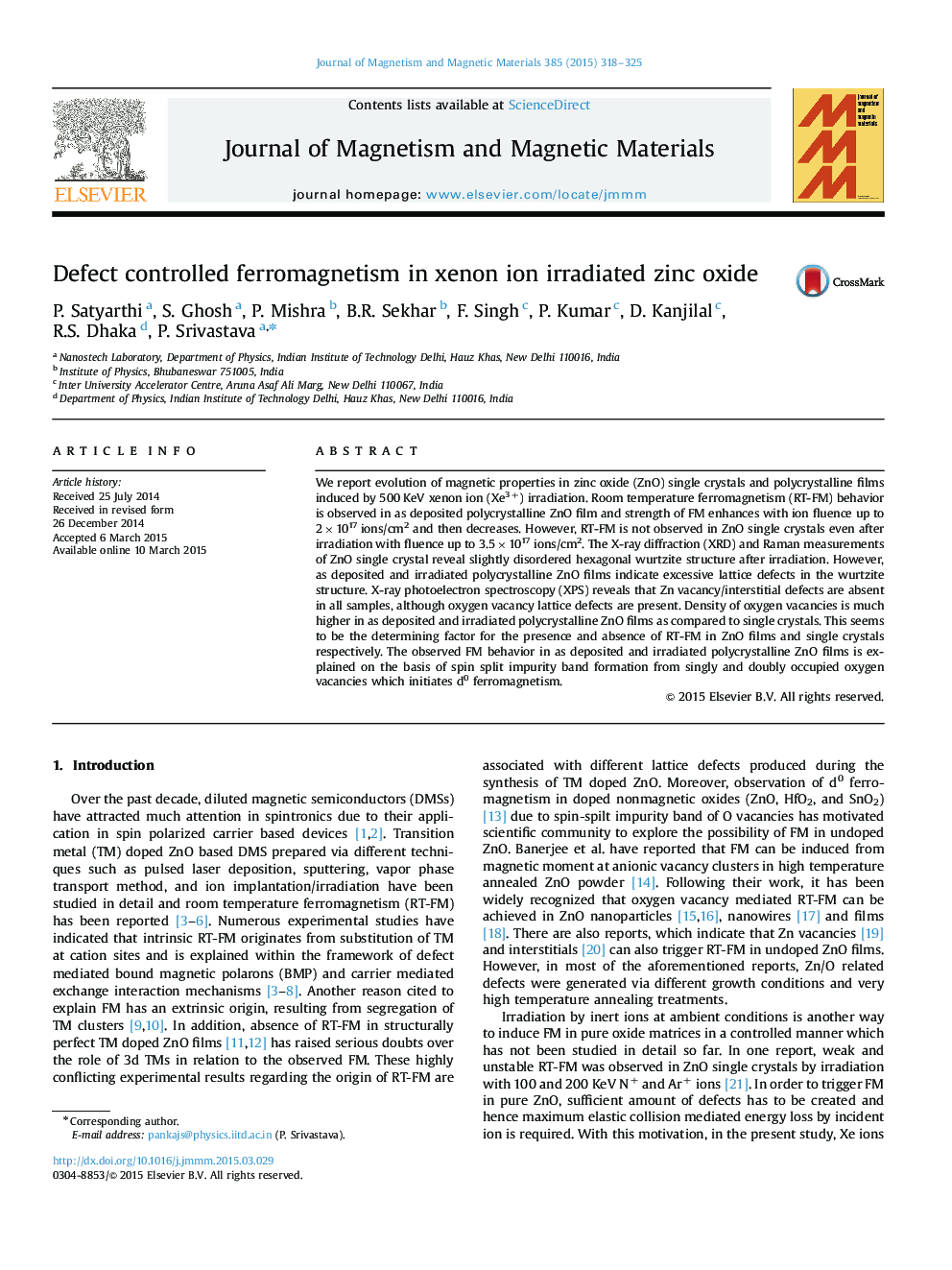| Article ID | Journal | Published Year | Pages | File Type |
|---|---|---|---|---|
| 1799160 | Journal of Magnetism and Magnetic Materials | 2015 | 8 Pages |
•We report defect controlled ferromagnetism in inert xenon ion irradiated ZnO.•Threshold concentration of O vacancies is essential to trigger ferromagnetism.•Spin imbalance of singly and doubly occupied oxygen vacancies induces ferromagnetism.•We reveal importance of d0 ferromagnetism in ZnO for future spintronics devices.
We report evolution of magnetic properties in zinc oxide (ZnO) single crystals and polycrystalline films induced by 500 KeV xenon ion (Xe3+) irradiation. Room temperature ferromagnetism (RT-FM) behavior is observed in as deposited polycrystalline ZnO film and strength of FM enhances with ion fluence up to 2×1017 ions/cm2 and then decreases. However, RT-FM is not observed in ZnO single crystals even after irradiation with fluence up to 3.5×1017 ions/cm2. The X-ray diffraction (XRD) and Raman measurements of ZnO single crystal reveal slightly disordered hexagonal wurtzite structure after irradiation. However, as deposited and irradiated polycrystalline ZnO films indicate excessive lattice defects in the wurtzite structure. X-ray photoelectron spectroscopy (XPS) reveals that Zn vacancy/interstitial defects are absent in all samples, although oxygen vacancy lattice defects are present. Density of oxygen vacancies is much higher in as deposited and irradiated polycrystalline ZnO films as compared to single crystals. This seems to be the determining factor for the presence and absence of RT-FM in ZnO films and single crystals respectively. The observed FM behavior in as deposited and irradiated polycrystalline ZnO films is explained on the basis of spin split impurity band formation from singly and doubly occupied oxygen vacancies which initiates d0 ferromagnetism.
